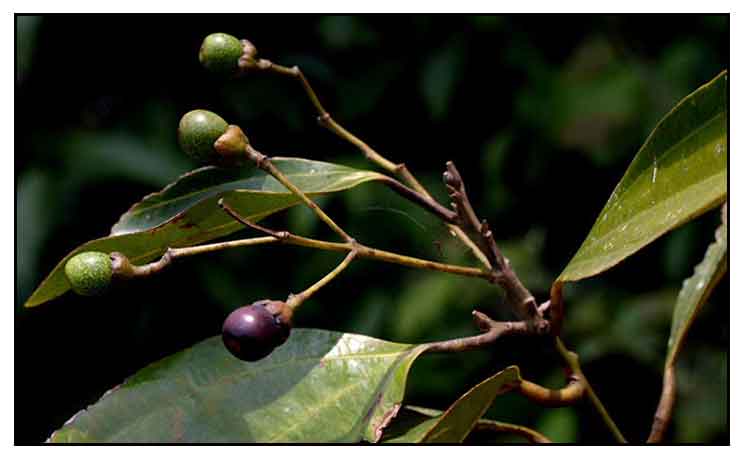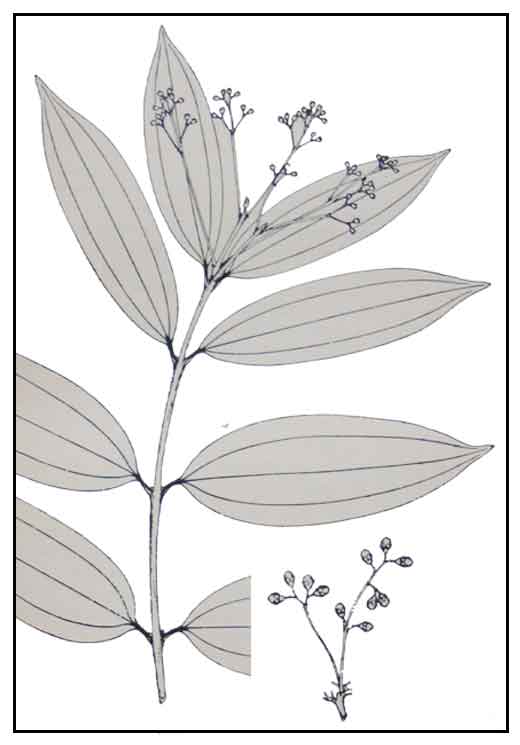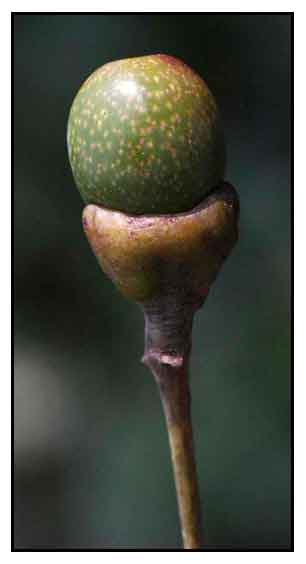
Family • Lauraceae
Namog
Cinnamomum iners Reinw.
WILD CINANMON
Da Ye Gui
| Scientific names | Common names |
| Cinnamomum iners Reinw. ex Blume | Marobo (S. L. Bis.) |
| Cinnamomum malabathrum sensu Gamble | Namog (Tagb.) |
| Cinnamomum malabathrum auct. | Wild cinnamon (Engl.) |
| Da ye gui (Chin.) | |
| Quisumbing's compilation lists four cinnamomum species: C. iners (namog), C, mercadoi (C. zeylanicum F.-Vill, kalingag), C. mindanense (kami) and C. zeylanicum Blume (canela). |
|
| Kaliñgag is a shared common name by two Cinnamomum species: C. zeylanicum and C. mindanense (nami). | |
| Other vernacular names |
| HINDI: Darchini, Jangli darchini, Tejpata. |
| JAPANESE: Inu nikkei. |
| KANNADA: Adavilavangapatte, Kadudalcini. |
| MALAYALAM: Ilavangam, Karuntoli, Karuvu, Vayana. |
| MARATHI: Ranachadal, Ranachadalchini, Randalchini. |
| SANSKRIT: Patra, Patraka, Tamalapatra, Tamalapatram, Tejpatra, Tilaka. |
| TAMIL: Ilavangkam, Kattukkaruva, Kattukkaruvappattai, Taalica pattiri. |
| TELUGU: Adavilavangapatta, Pachaku, Lavangam. |
| THAI: Chiat, Op choei, Op choei ton. |
| URDU: Darchini, Sazaj hindi, Sazaj i hindi, Tazpat, Tezpat. |
Last Update June 2013
![]()
 |
| IMAGE SOURCE: / Photo / Cinnamomum iners Reinw. ex Blume - LAURACEAE / © BIOTIK / A Project funded by European Commission under ASI@IT&C programme / CLICK ON IMAGE TO GO TO SOURCE PAGE / Biotick |
| IMAGE SOURCE: / Photo / Fruit close up / Cinnamomum iners Reinw. ex Blume - LAURACEAE / © BIOTIK / A Project funded by European Commission under ASI@IT&C programme / Biotick / CLICK ON IMAGE TO GO TO SOURCE PAGE |
| IMAGE SOURCE: Minor Products of Philippine Forests / Vol 2 / William Brown and Arthur Fisher / Figure 63/ Cinnamomum iners, A source of cinnamon / 1920 / Modifications by G. Stuart |
Additional
Sources and Suggested Readings |
• |
 |
• |

 Botany
Botany Distribution
Distribution
